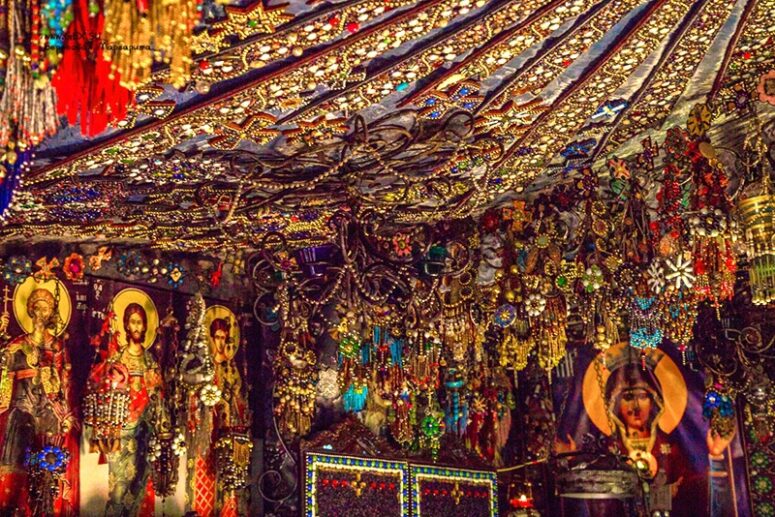
There is an unusual mountain hermitage located near the cave city of Kachi-Kaliyon in Crimea, in the gorge called Tash-Air.
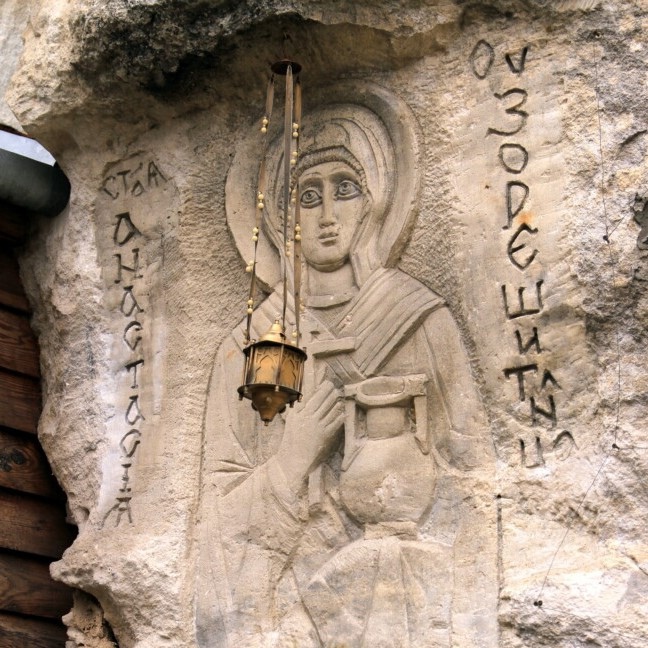
It is named after St Anastasia of Sirmium, a 3rd century saint who devoted herself entirely to helping imprisoned Christians, comforting and healing them, until she suffered martyrdom for her faith. St Anastasia is deeply revered in Russia and is known for helping and consoling prisoners, child-bearing women and those in need.
The walking path to the mountain shrine runs along a narrow, steep staircase made of 650 old car tires covered in concrete. This staircase leading to the skete rises to a height of 150 m and is not easy to walk. Because of this fact, it is called the “path of sinners”. Pilgrims usually ascend it slowly, with prayer, overcoming weakness and training the will. The beauty awaiting the traveler at the top is definitely worth the effort.
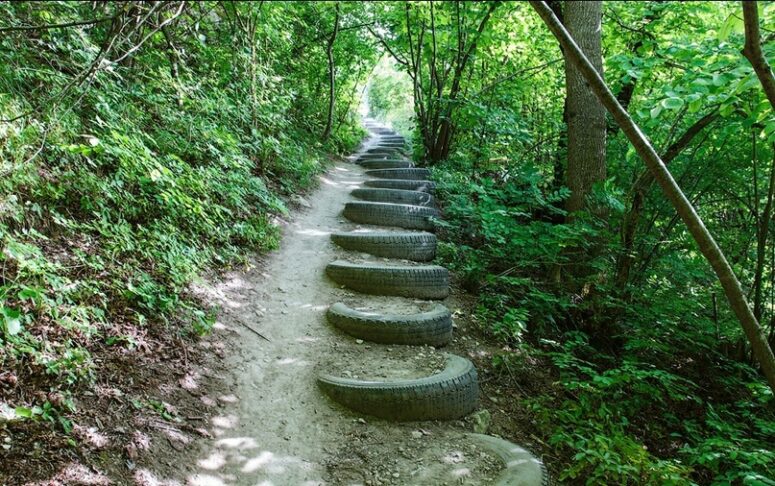
According to the researchers, a cave monastery was founded in this area between the 6th and 8th centuries by the monks fleeing persecution during the iconoclasm in Byzantium. Later, the monastery was destroyed by an earthquake. But in different centuries, monks returned to this place from time to time. In the 19th century the monastery was revived, and the church of St Anastasia of Sirmium was built here. In the 1930s, the Soviet authorities closed the monastery and declared the local territory a nature reserve. Later, a quarry with rock excavation was organized here.
In 2005, Hieromonk Dorotheos from the nearby Bakhchisaray Holy Dormition Monastery came to the abandoned quarry. He received the abbot’s blessing and together with several like-minded people began hard work restoring the monastery. The monks lived in dugouts and carried water and building materials up a 1.5 kilometer steep cliff. But their faith, prayer and selfless work eventually bore fruit — a unique hermitage attracting pilgrims from Ukraine, Belarus and Russia was finally built.

Today, the skete consists of wooden and stone buildings, including the monastic cells, a gift shop, a hotel and a brick bell tower. Surprisingly, everything here is reminiscent of Greece and Mount Athos. Inspired by his visits to the Holy Mountain, Abbot Dorotheos decided to implement his favorite Athonite decoration ideas in the monastery of St Anastasia and “reconstruct” the Athonite spirit.
The main “specialty” of this place can be seen right away. All the walls are decorated with works of art made of beads and colored stones.
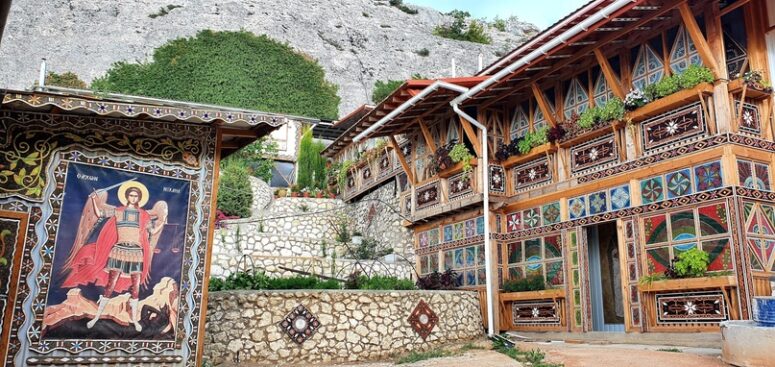
The church of St Anastasia was built in a rock cave, where an industrial adit used to be located.
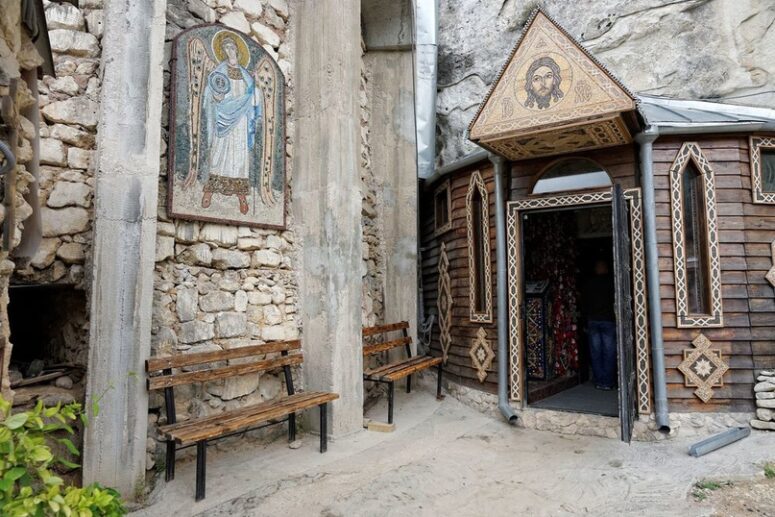
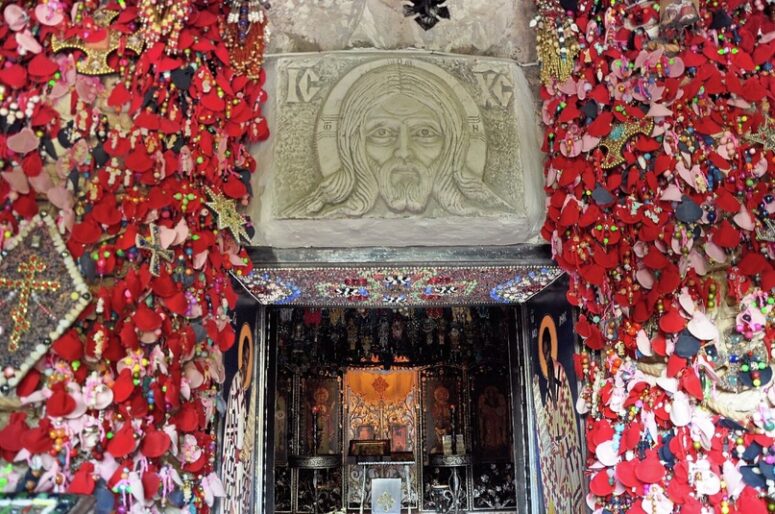
It is very damp inside a limestone adit, and the paint would not hold well on its walls and vaults. Therefore, it was decided to create icons and decorate the walls of the church with beads, fabrics and multi-colored stones, which were first donated by parishioners, and then purchased.
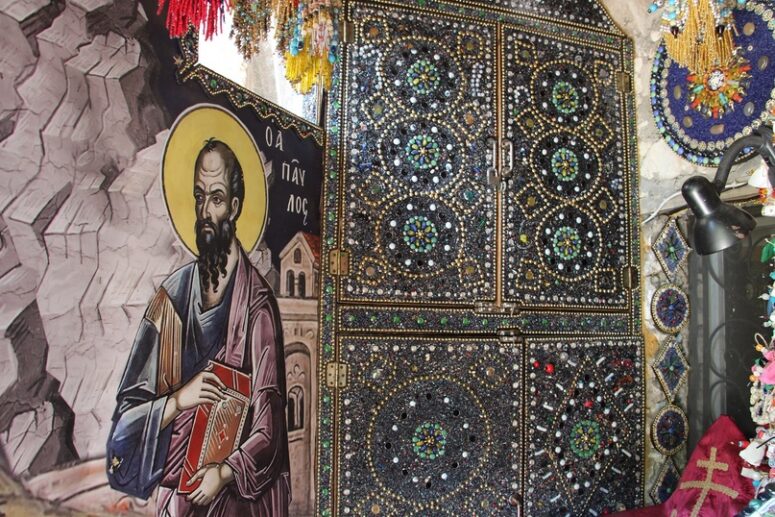


Visiting Athos, Abbot Dorotheos was also impressed by the abundance of beautiful icon lamps in churches and decided to add them to the decoration of his church. The abbot made his own icon lamps, decorating them with donated beads and crosses. The entire ceiling of the church is dotted with hundreds of unique icon lamps, which, together with candles, replace electric lighting.
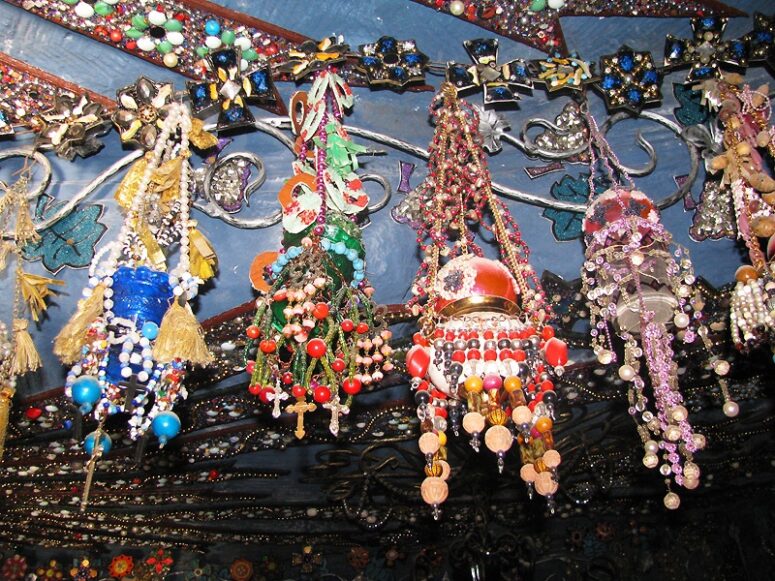
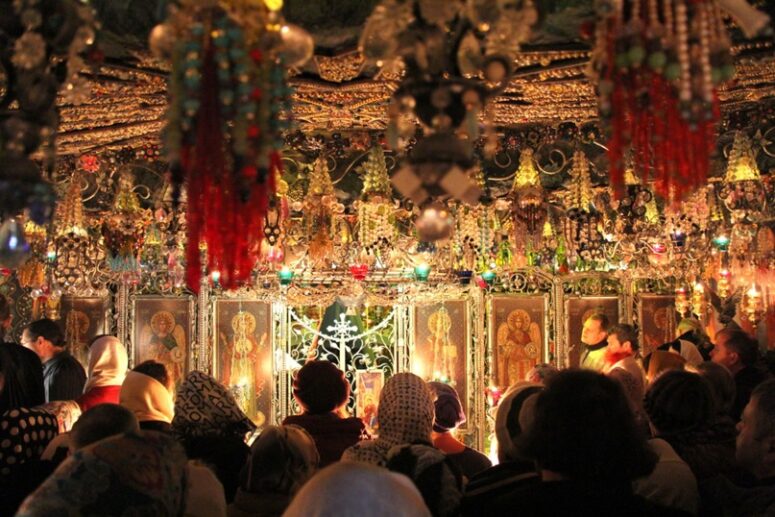
Beaded icons and ornaments are used not only in the interior decoration of the church. The walls of all the monastery buildings are also shining with different colors of beadwork.
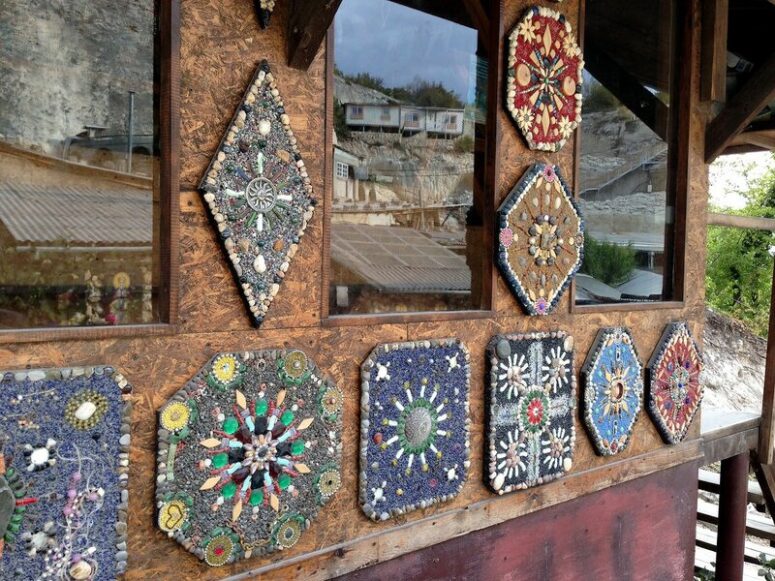
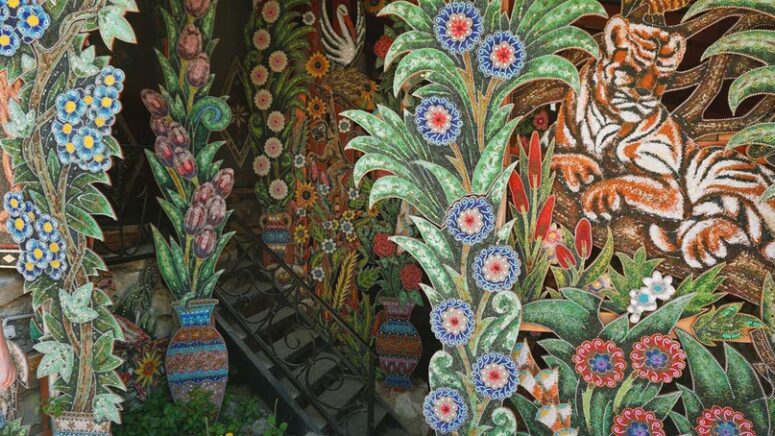
The fire of 2018 destroying most of the buildings became a real test for the monastery dwellers. Fortunately, none of the people were hurt, and the fire did not touch the church of St Anastasia. This reminds of the life of the church patroness whose soul went to the Lord while her body remained unharmed, despite the pagans’ attempts to starve her, sink the ship in which she was sailing with other prisoners and, finally, burn her at the stake.
A few days after the fire, the monastery was again buzzing with activity. Help came both from the local residents and the caring people all over Russia. Gradually, the monastery began to rise from the ashes. It is noteworthy that “Anastasia” translates from Greek (ἀνάστασις) as “return to life, resurrection”. Undoubtedly, the saint’s prayers helped the speedy restoration of the skete. Perhaps, it was precisely for such a miraculous “resurrection” of the monastery that the Lord allowed this fire to happen.
Today the hermitage continues to grow, “biting” deeper into the rocks. New buildings are being erected on its territory, while new mosaic and beaded icons are being made in its workshops. They will be used to decorate the walls of new buildings, as well as the large church in the name of the Most Holy Theotokos “the Three-handed”, currently under construction next to the existing church. According to the project, its interior will also be decorated with beads.
That said, the main attraction of this place is the spirit of unceasing prayer, co-existing with everything that has been created here. It is also the proximity of God and the intercession of St Anastasia, quick to hear all the sincere prayers addressed to her. Some people note the peace of mind obtained from staying here, while others receive healing from their ailments.




